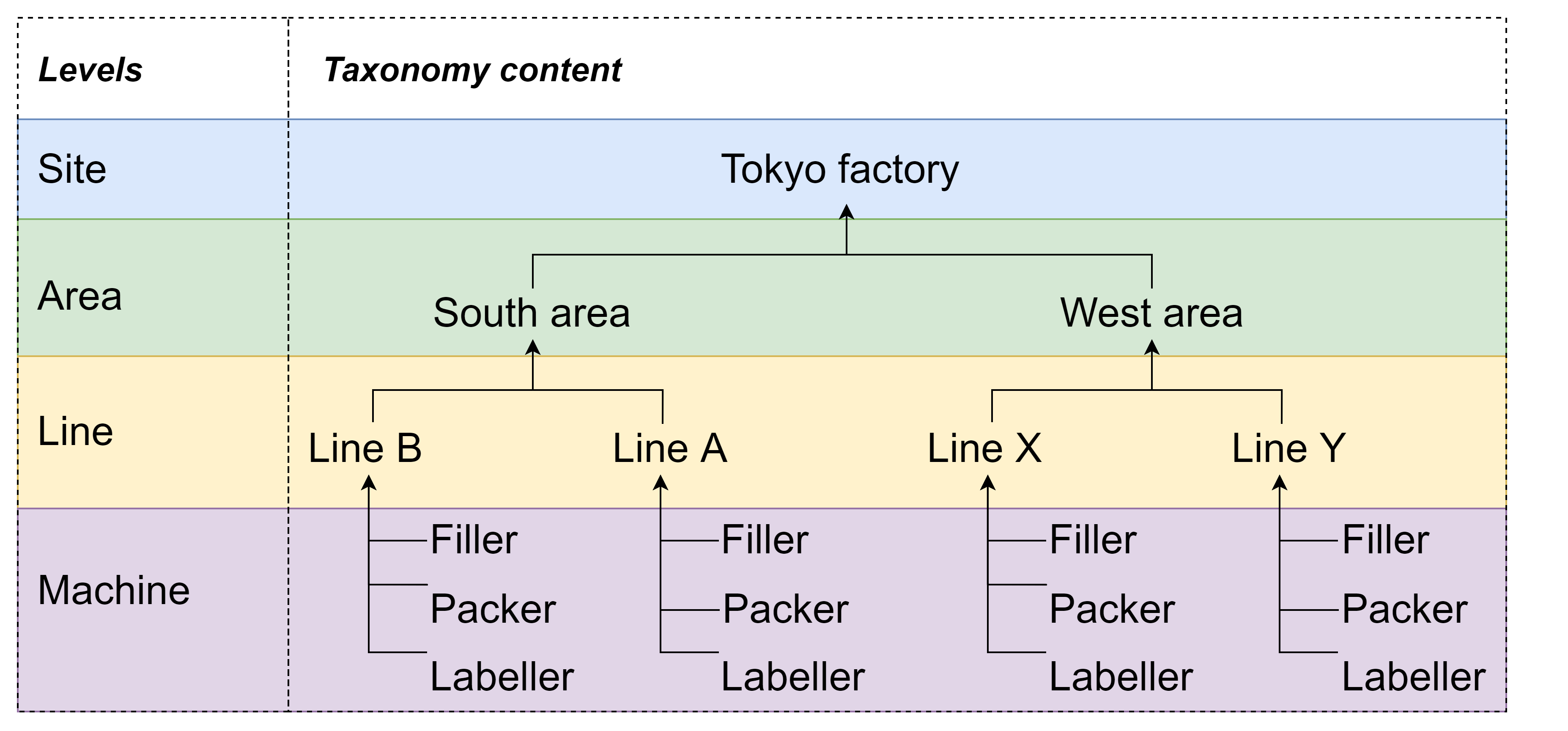...
One of the challenges in implementing a universal software platform in a given organization is adapting it to its specific requirements without sacrificing overall consistency. This applies to both the application interface and data organization.
...
| Panel | ||||||
|---|---|---|---|---|---|---|
| ||||||
Each taxonomy is defined by:
|
System classifications that are build-in into LogiX are also implemented and exposed as taxonomies. This includes:
standard ISA-95 factory structure (Site/Area/Line/Machine) which is obligatory for each Line and Machine configured in Logix. This taxonomy is used also to uniquely identify assets (i.e. while pointing root cause machine for line downtime). Levels of this taxonomy (Site/Area/Line/Machine) are read-only and cannot be altered.
standard production event (downtime) classification used to calculate OEE
...
. This ‘Loss Type' taxonomy by default is defined as a simple
...
flat list of five nodes (Utilization Loss, Availability Loss, Performance loss, Quality loss
In previous versions, each configured factory event ("problem") was assigned to a given category using dedicated 'Tags'.
In the current version, this list is defined as built-in taxonomy.
This taxonomy can be optionally further customized for each Logix deployment, to meet client needs by assigning sub-categories for each kind of loss.
...
, Work) but can be further detailed by adding subsequent nodes to support reporting needs in a given organization (e.g. Availability Loss can have sublevels for ‘Breakdowns’, 'Process failures’ etc).
OEE loss type taxonomy used in PackOS configuration
Configuration of "problems" in terms of impact on OEE is defined by assigning a given problem to a taxonomy leaf, while Tags are still used to configure other aspects of signal processing .
...
Example of customized OEE-loss categorization:
Utilization Loss
Unoccupied time
Idle
Breaks
Legal
Availability Loss
Planned
Maintenance
Changeovers
Training
Others
Unplanned
Breakdown
Waiting
Others
Performance loss
Quality loss
2 Factory structure taxonomy. In this version, changes are visible only in the user interface for Config Hub, where plant structure can be viewed using the chosen taxonomy:
...
(more on taxonomies soon in KB)(in previous versions, each configured factory event ("problem") was assigned to a given category using dedicated 'Tags')
...

